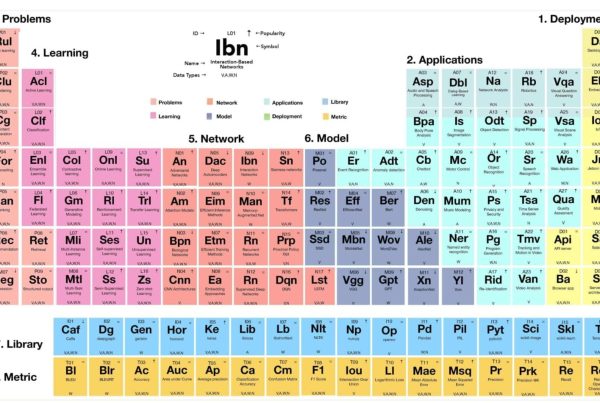In essence, it is a city that makes the lives of its inhabitants safer and more comfortable. However, there are both benefits and challenges prevalent when utilising artificial intelligence (AI) in ‘Smart Cities’.
According to Microsoft, ‘smart cities’ are urban areas that use digital technologies to enrich their residents’ lives. From improving infrastructure to modernising government services, enhancing accessibility, driving sustainability, and accelerating economic development.
How is Artificial Intelligence Used in Smart Cities?
To make their cities “smart”, governments use a combination of cutting-edge solutions like the Internet of Things (IoT), cloud computing, artificial intelligence (AI), augmented reality (AR), edge, and blockchain. City planners, local governments, and architects apply AI and machine learning (ML) for many different aspects of ‘smart cities’. These include:
- traffic management,
- road safety,
- water resource management,
- e-mobility,
- public safety and law enforcement,
- newer automation systems, and even
- the digital delivery of public goods and services.
Indeed, the applications are abundant and quite possibly limited only by the imagination of those in power, the budget available, and the technology at hand.
According to the United Nations Department of Economic and Social Affairs, 55% of the world’s population resides in urban areas. This number is expected to rise to 68% by 2050. As such, there is a strong push to create a more robust digital backbone to make these cities more manageable.
What are the Benefits of Implementing AI in Smart Cities?
The benefits of implementing AI in smart cities all fall under the theme of creating more efficient, safer, and improved economic outcomes for their citizens. Machine Learning systems within ‘smart cities’ are imbued with AI’s transformative capabilities, enhancing efficiency and minimising environmental impact.
Additionally, AI-powered digital interfaces are revolutionising the delivery of public services, welcoming in a new era of citizen engagement and empowerment.
1. The Use of Big Data
One of the biggest and most powerful tools to achieve these goals is the use of big data in conjunction with IoT. The data gathered gives a powerful insight into the circumstances of a city. A well-designed data analytics strategy allows city officials to access and analyse a massive amount of information.
Effective big data applications and strategies provide a city with information to identify and staff police in high-risk areas, for example. They also allow for forecasting and planning for expansion in citywide population growth.
Furthermore, these strategies can identify trends in citizen interests, concerns, and needs. In addition, live data can make rescue and retrieval much easier in times of disaster like hurricanes or earthquakes.
2. Tackling Environmental Issues
In our time of climate change, it is pivotal for future cities to manage their waste sustainably. Due to the rise of greenhouse gases, debris in our oceans, and trash in our streets, ‘smart cities’ are fighting back. From energy-efficient buildings, air quality sensors, and renewable energy sources.
Deploying air quality sensors around a city can provide data to track low air quality peak times and identify pollution causes. These sensors can help lay a foundation for reducing air pollution in even the most populated cities.
AI-powered solutions are also an essential part of the emerging e-mobility revolution, organising electric car charging networks to sync smoothly with the variable aspects of city life. The analytical power of Machine Learning benefits public safety and law enforcement by helping law enforcement organisations to understand complicated patterns and maintain order quickly.
What are the Challenges to Implementing AI in Smart Cities?
The challenges in implementing AI in ‘smart cities’ are as equally abundant as the benefits. The European Union published a briefing on the use of AI in ‘smart cities’ and urban mobility.
Therein, they outlined the multiple benefits mentioned above. However, the brief also outlined the difficulties to implementing AI in urban settings:
1. Availability and reliability of data and technology
Despite the integrated nature of the EU, there remains an uneven level of technological adoption in the different states. Data is essential for Machine Learning programmes to function, but not every city has equal access to relevant, high-quality data.
There can be differences between regions and even within cities themselves; certain parts may have access to abundant data, while others may have little to none at all.
This imbalance in the accessibility of data can make it more difficult to implement AI solutions fairly across all regions. As well as this, there are difficulties in guaranteeing that the digital backbone of a ‘smart city’ is dependable and accessible to all citizens, due to the reliability varying in technology infrastructure.
Accessibility Imbalances
For example, the Eastern part of the EU falls behind the West regarding infrastructure and integration. Estonia, for example, is leagues ahead even against countries like the US and China, with its early adoption of digital technologies and blockchain. As a result, more infrastructure must be implemented to truly leverage AI.
Also present is the variation of accessibility to individual citizens. Not every resident of a city or wider region will have the same access to Machine Learning services or AI-driven projects.
Vulnerable groups, such as elderly residents or those with low incomes, may not have access to the technology or information needed to participate fully in ‘smart city’ initiatives. Focused efforts are essential in ensuring that all aspects of ‘smart cities’ are inclusive, and that every citizen – regardless of demographic group – can benefit.
2. Ethical challenges for responsible use of AI
The ethical challenges in applying AI in cities may be the most fundamental issue prevalent. The use of big data, digital technologies, and AI always entail surveillance and privacy issues. Civil liberties and privacy are at risk because of this.
A significant ethical dilemma is finding the correct balance between protecting human rights and using AI for urban optimisation. Given the pioneering reputation of the EU with the GDPR, it makes sense that the union takes extreme measures to ensure the responsible use of AI.
However, such caution lengthens the time between ideation and implementation. Establishing responsible AI governance frameworks and practises is vital to tackle these problems. However, it is a lengthy and convoluted process to guarantee the ethical and compliant use of AI.
3. Data privacy and security
As ‘smart cities’ become more dependent on technology, they become increasingly more attractive for cyberattacks. Numerous entry points are created for malicious individuals by the rapid increase in the presence of IoT devices and the sheer volume of data exchanged within the ecosystems of smart cities.
The volume of private citizen data that ‘smart cities’ gather and process also increases the risk to data security and privacy. It is crucial to prevent breaches of security and unauthorised access to private citizen data.
It will be a constant challenge for government organisations to defend sensitive data, vital infrastructure, and citizen privacy from cyber threats. In order to minimise these risks, smart city planners need to allocate resources towards effective cybersecurity measures, protocols, and partake in ongoing monitoring.
To preserve trust and guarantee that private citizen information is kept safe, it is essential to put strong data anonymisation, encryption, and access control mechanisms in place.
4. Regulatory difficulties around infrastructure and data
For ‘smart cities’ to work, cities must become more open and hyperconnected rather than individually regulated. This regulatory environment is complex and varied.
Many essential infrastructures, such as mobility networks, heating, water, and electricity, may be overseen by distinct organisations within a single city. For example, different energy companies with different systems may each be governed by a separate set of rules.
When building a ‘smart city’, this then leads to the challenge of integrating electricity, heating, water and mobility infrastructures. As such, regulation must be put in place to make these integrations more seamless – in a city, between cities, and eventually, between union states.
-
Additional Expenditure
Such complications add to the regulatory environment’s complexity. Adding to this is the costly expenses that come with implementing such regulations. City budgets may already be stretched by the costs of training employees, maintaining infrastructure, and purchasing cutting-edge technology.
It can be difficult to balance these costs with the demands for regulatory implementation along with physical infrastructure improvements, such as road improvements, and other necessary services. Cities will need to source sustainable funding processes, and possibly partnerships with businesses in the private sector, in order to overcome budget limitations and guarantee the long-term sustainability of smart city initiatives.
Key Takeaway
The use of AI and digital technologies to create ‘smart cities’ is certainly the future. More so, if we want to create a more sustainable way of living.
However, while the benefits are exciting and abundant, many difficulties remain to solve. Addressing these challenges will require city planners and governments to undertake proactive collaborations. Nonetheless, we can definitely look forward to smarter cities!
Author: Michelle Diaz


